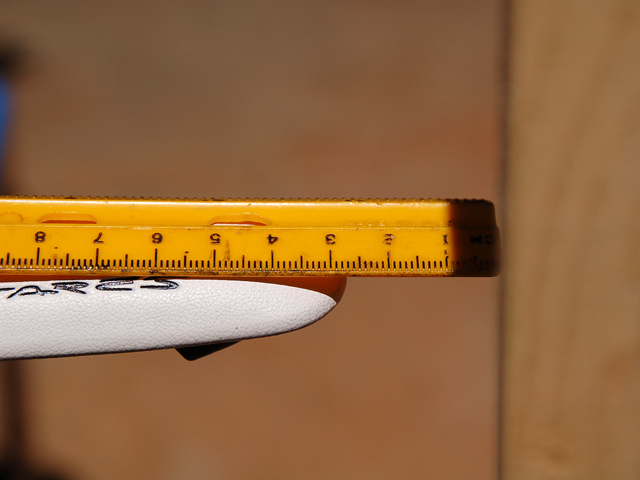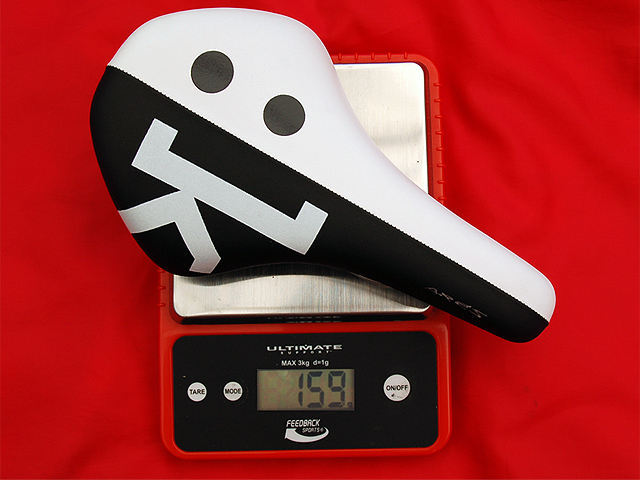Fizik Ares Saddle - Tested 7-24-09

Fizik Ares Saddle
- Specifically designed for to meet UCI regulations for time trials
- Cost: $199 MSRP
- Natural Leather Seat Cover
- Made in Italy
- ICS bag compatible
- Cool black and white color scheme. However, the white is subject to grease and fingerprints.
- Weight: Claimed 155 grams. Actual: 159.
This is a review of the Fizik Ares saddle, which is expressly designed for time trials. Fizik has been making some fantastic products and the Ares is the newest in the
line. Fizik's most well known offerings include:
- The Arione -- extremely popular and uniquely longer than most saddles (unfortunately, this saddle causes numbness for me)
- The Aliante is perhaps the most comfortable saddle ever made; I can't recommend it highly enough for folks who commute. And it will make any "superstiff" bike a lot more tolerable.
- The Antares, while not as comfortable as the Aliante, is an excellent triathlon saddle and provides a firmer ride than the Aliante that doesn't rob any power.
- So I was really excited to test the Ares, thinking it could be the ultimate triathlon saddle.
 I'm illegal!
I'm illegal!
The
Ares was designed to meet a somewhat archaic
UCI regulation. This
regulation dictates that the distance from the tip of the saddle can be
no less than 50mm from the center of the bottom bracket. And as I came to find
out, this is a pretty dramatic limitation. In fact, in my typical (read:
comfortable) triathlon position, using a first generation, 76 degree seat
tube Scott Plasma and Fizik
Antares saddle, I found that my current position is just 27mm away from the
center of the crank; 23mm in violation of the rule.
This rule explains why, in the Grand Tours, you sometimes see time trial bikes with cut nose saddles; it's to comply with this rule. This must also mean that TT bikes are different than Triathlon bikes; they need to conform to this regulation. My guess is that TT bikes must also shorten the top tube to make it easier to get into the "aerobar" position. Proof might be none other than Lance Armstrong. Did you see him in Stage 18, the final TT in the '09 TDF? His upper arms must have been bruised; he was continually hitting his kneecap into the upper arm. One can deduce that TT bikes compensate for the lack of forward angle of the seat post by pulling in the front end.
 The
Specs
The
Specs
So how different is the Ares? It is a significant 30mm shorter than a typical
Selle Italia SLR or Antares. However, it retains the same width of the Antares
in the rear, giving a large and stable platform to push off against. The weight
savings is also significant, more than 10% less than the already light Antares.



How does it ride?
I've recently started to doing time trials to try
something new and different. Unlike triathlons, where you do move around in the
saddle a lot and change positions for climbing and motoring on the flats, the
time trials I've been doing have been mostly flat with some rolling hills. The
general guidance is to try and stay in the aero position as long as possible and
simply turn over those cranks as fast and efficient as you can. It's turned out
to be incredibly challenging and hard for me and I haven't had great results.
For instance, in recent triathlons, I've
continuously placed in the top 5-10% of my age group on the bike. However, with
time trials, I'm decidedly mid-pack. In other words, TT's are darn hard. The
Ares definitely serves it's purpose; it offers the support and relative comfort
when pushed back in the saddle. But unlike the Antares, there really isn't that
much room to come forward on the saddle for more of a "running" style stroke.
You end up with the nose buried in parts you weren't meant to sit on. Obviously,
this isn't super comfortable if you like/need to move around. For the dedicated
time trialist, though, it's likely not an issue.
The verdict
Though this is very well crafted and reasonably comfortable when sitting back,
it definitely does not work for triathlons r regular riding when you creep out on to the nose of
the saddle. On the flip side, I'm not experienced enough to really know the best
technique for time trialing but it does seem that the rounded end is relatively
more comfort than something that is abruptly sawed off.
In sum, I don't think this is a great choice for
triathletes, roadies, and especially not commuters. However, if you are a REAL time
trialer, this could be the best there is.
Kudos to Fizik for creating a product that fits this niche.
Value: 4 stars
Overall: 4.5 stars